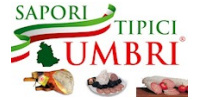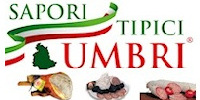At San Giovanni Profiamma, a village just four kilometres outside Foligno on the Via Flaminia, the church of San Giovanni Battista is worth visiting. The name of the village has two derivations, firstly from the Romanesque church built here between the 12th and 13th century, and secondly from the old Forum Flaminii settlement founded here around 220 BC by Caius Flaminii.
A Roman municipium at first, the village later became the seat of the local bishop before coming under the jurisdiction of the nearby Fulginiae (Foligno).
The church in honour of St John the Baptist was built using scrap materials taken from the pre-exisiting paleo-Christian church, as well as fragments of Roman buildings.
The doorway in the facade is decorated with symbolic figures carved at the time of Pope Gregory IX (1230) by a marble cutter we know only to have been called Filippo. The interior is composed of a single nave with an elevated presbyterium that is accessible by a 13-step flight of steps.
The right hand wall contains several Roman architectural fragments, including a sarcophagus made by a local craftsman in the 6th century, possibly for the bishop of Forum Flaminii.
The altar rests on a trunk of solid granite, another fragment of a Roman building that was unearthed directly below the church itself.
Divided into three naves, the crypt is beneath the presbyterium. All six of the colums are made up of scrap materials taken from elsewhere. The second to the left is particularly interesting in that it is made from an 8th century architrave carved with Christian symbols such as the peacock, vines and circles.
Two important paintings hang at the entrance. The 'Madonna of the Holy Rosary' (1625) has been attributed to Marcantonio Grecchi, while the 'Baptism of Jesus' has been attributed to Tommaso Nasini.
Our network:
Thursday 1 May 2025
Roman and Paleo-Christian Fragments in a Basilica Near Foligno© Copyright 2001-2025 by UmbriaOnline.com |








